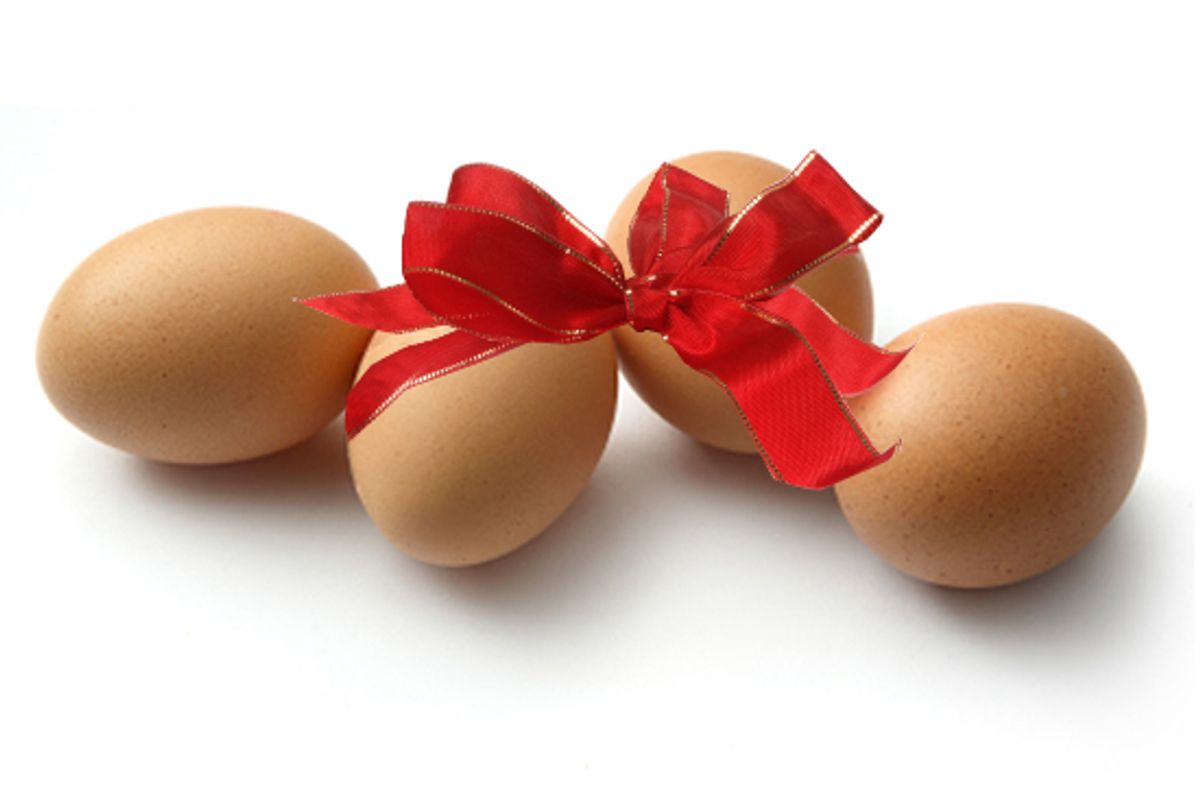Ingredients
- 3 large eggs per person
- 1 tablespoon butter per person, cut into 1 tablespoon chunks
- Salt and pepper to taste
Directions
- Take the eggs out of the fridge 15 minutes before cooking, or let them sit in warm tap water for a few minutes. The magic happens in this dish by bringing all the eggs up to the temperature where they turn from liquid to solid (that's what it means to cook eggs, after all) at the same time. The key to that is low heat and constant stirring. But that doesn't mean you can't get a head start by not pouring in freezing-cold eggs.
- Crack the eggs into a bowl, give them a solid pinch of salt and a crank of pepper, and beat them with a fork until the yolk and white are well combined, but don't get them all frothy. Froth means you're beating air into them. If you're making fluffy eggs, that air is great -- it expands with heat and puffs the eggs up from the inside. (Ever see scrambled egg recipes that call for a spoonful of water? It'll turn to steam and push outward, which will also expand the eggs.) Taken to the logical extreme, you have the Waffle House omelet, which they make by whipping eggs in a milkshake blender, and a three-egg omelet comes out the size of your torso. I have a real love for the Waffle House, but that massive egg-flavored marshmallow is just gross.
- Heat your pan over medium heat and add the butter, swirling, until the foaming just stops. Pour in the eggs and immediately turn down the heat to low. Get stirring. Pick a move: little circles, spirals, zigzags with an occasional swipe around the edge of the pan. Your duty is to make sure that none of the egg on the bottom or creeping up the sides of the pan is getting cooked.
- Keep stirring, even though nothing's happening. Well, a little bit is happening. The color is getting a little paler. There will be a little foam bubbling up around the edges. (That air! It's like you're performing an exorcism.) It's hard to give timelines here, because our pans, our eggs, our temperatures are all different, so you'll just have to keep an eye on the eggs, getting acquainted with how they behave in the heat. (For two people, I've done this in about 10 minutes. For four, I've stood there for 20.)
- After the foaming, you'll eventually start to see the eggs thicken a bit, looking like a melted milkshake, then a batter. After it's reached the batter stage, you really can't stop stirring. The eggs are so close to hitting the cooking temperature that any pause will let the eggs sitting on the bottom of the pan curdle immediately. Soon, the eggs will look like porridge, and with each passing moment feel thicker, tighter, heavier. Now it's up to you to decide how done they should be. I like to take them right past the porridge point, to where they look like soft polenta. A little less and they'll be runnier, slippery. A little more and they'll be more dense, almost like a spread.
- When they're done, get them out of the pan immediately, and serve with a spoon and hot toast. You can serve them like you would -- bacon, hash browns, the whole deal. But for me, these eggs come out so dense, so rich tasting, it's almost too much to serve them with anything else fatty. I like to have them with toast, maybe some roasted vegetables, or some salad. Of course, I could easily be talked into spreading a spoonful of them on an English muffin with ham, a McMuffin for posterity.
- Heat your pan over medium heat and add the butter, swirling, until the foaming just stops. Pour in the eggs and immediately turn down the heat to low. Get stirring. Pick a move: little circles, spirals, zigzags with an occasional swipe around the edge of the pan. Your duty is to make sure that none of the egg on the bottom or creeping up the sides of the pan is getting cooked.
Variations:
1. Fines herbes are classic with eggs, their grassy, oniony, anise-y flavor bright and satisfying. Mince together 4 parts parsley, 3 parts chervil, 2 parts chives, and 1 part tarragon, and add a small pinch per person into the eggs when you beat them.
2. Now that you get the principle behind slow-scrambling, feel free to mix up the texture however you like. I actually cheat a bit and let the pan get a little hotter in the beginning; when I pour in the eggs, I let the first layer puff and set a little before giving it a twirl with the spatula and getting into the steady stirring -- I actually like the eggs lightened up just a little bit. I guess I'm not as hardcore an evangelist as I might be.

Shares